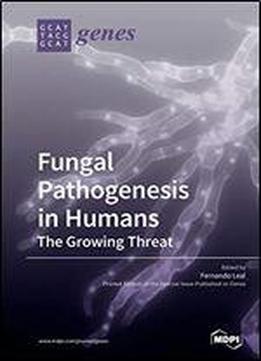
Fungal Pathogenesis In Humans: The Growing Threat
by Fernando Leal /
2019 / English / PDF
10.6 MB Download
Dear Colleagues, Cancer survival rates and successful organ transplantation in patients continues to increase due to improvements in early diagnosis and treatments. Since immuno-suppressive therapies are frequently used, the mortality rate due to secondary infections has become an ever-increasing problem. Opportunistic fungal infections are probably the deadliest threat to these patients due to their difficult early diagnosis, the limited effect of antifungal drugs and the appearance of resistances. In recent years, a considerable effort has been devoted to investigating the role of many virulence traits in the pathogenic outcome of fungal infections. New virulence factors (hypoxia adaptation, CO2 sensing, pH regulation, micronutrient acquisition, secondary metabolites, immunity regulators, etc.) have been reported and their molecular mechanisms of action are being thoroughly investigated. The recent application of gene-editing technologies such as CRISPr-Cas9, has opened a whole new window to the discovery of new fungal virulence factors. Accurate fungal genotyping, Next Generation Sequencing and RNAseq approaches will undoubtedly provide new clues to interpret the plethora of molecular interactions controlling these complex systems. Unraveling their intimate regulatory details will provide insights for a more target-focused search or a rational design of more specific antifungal agents. This Special Issue is show significant discoveries, proofs of concept of new theories or relevant observations in fungal pathogenesis and its regulation. Dr. Fernando Leal Guest Editor











